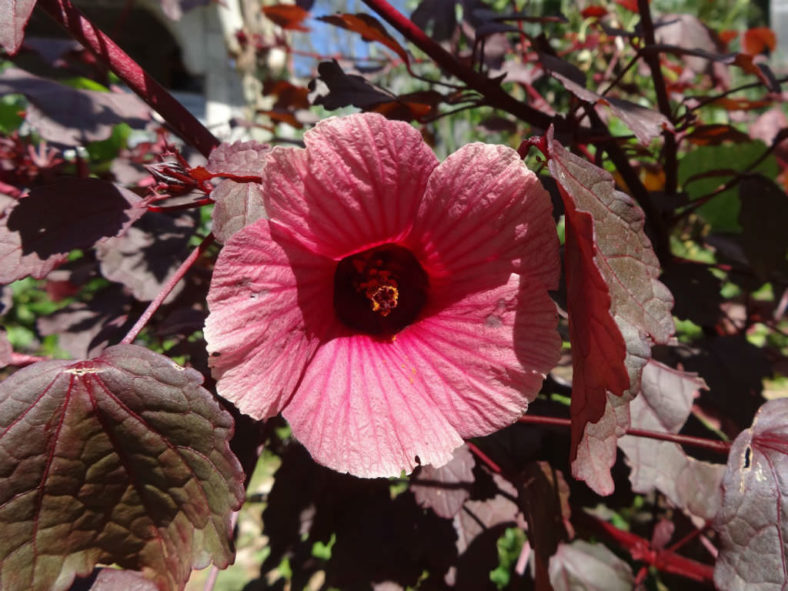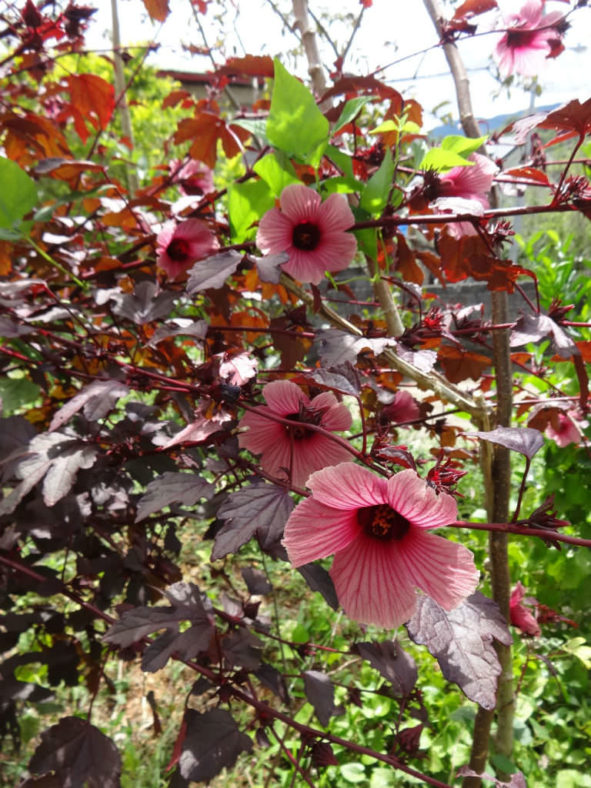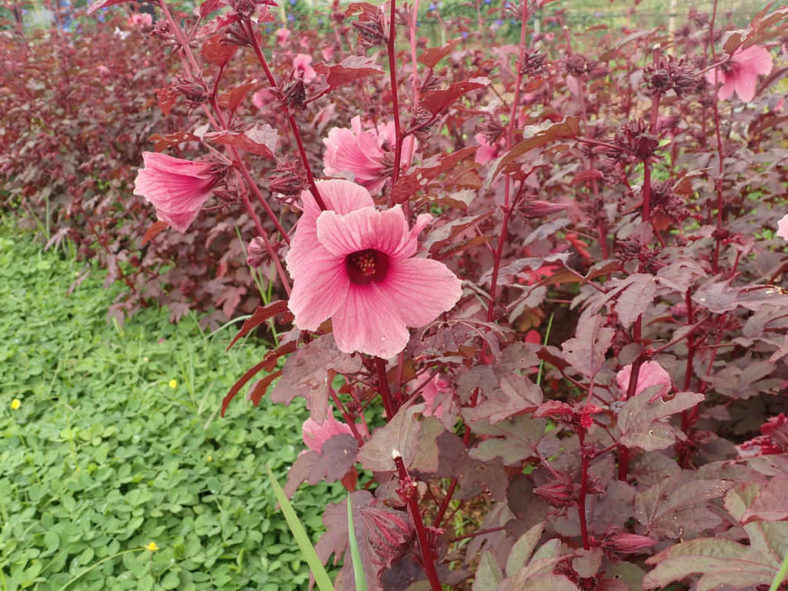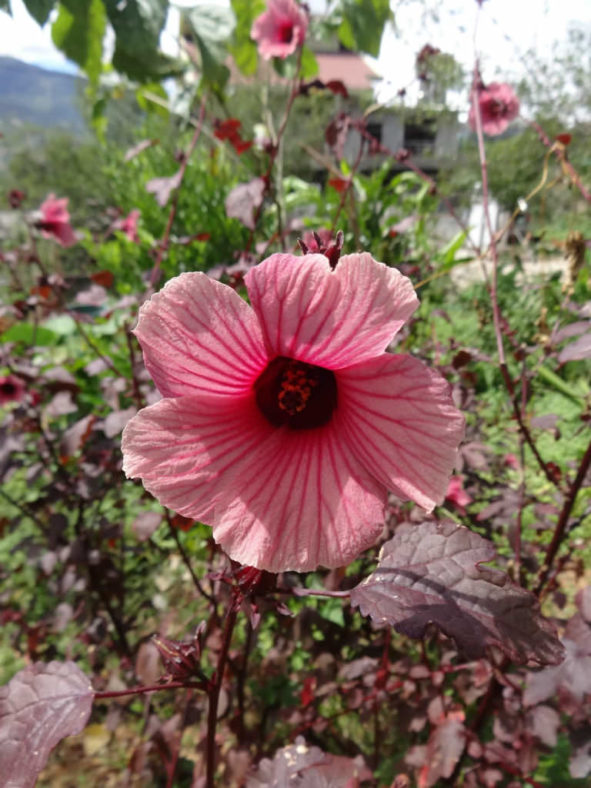Scientific Name
Hibiscus acetosella Welw. ex Hiern
Common Names
Cranberry Hibiscus, African Rose Mallow, False Roselle, Maroon Mallow, Red Leaf Hibiscus, Red Leaved Hibiscus, Red Shield Hibiscus
Scientific Classification
Family: Malvaceae
Tribe: Hibisceae
Genus: Hibiscus
Origin
Hibiscus acetosella is thought to have come about via hybridization between Hibiscus asper and Hibiscus surattensis secondary to their cultivation.
Flower
Color: Dark maroon
Bloom Time: Late summer or fall
Description
Hibiscus acetosella is a tender perennial subshrub that is easily grown as an annual in colder climates. The plant can grow up to 6 feet (1.8 m) tall and up to 30 inches (75 cm) wide during one season. Leaves can be ovate or lobed, green with red veining to a full deep burgundy.
It has typical Hibiscus funnel-shaped flowers. They are up to 2 inches (5 cm) in diameter and vary in color, rarely yellow, and most often the dark maroon characteristic of the foliage with darker vein-like markings.

Hardiness
USDA hardiness zone 8a to 11b: from 10 °F (−12.2 °C) to 50 °F (+10 °C).
How to Grow and Care
Hibiscus should be moved outside in the summer and back inside in winter. Tips for a successful transition include: Trim the plant hard before moving it inside for the winter. It will go into near dormancy until late winter. After you trim it, treat it thoroughly for insects before bringing it in. Neem oil and liquid detergent work well, or use a hose to blast off insects. Once inside, don't overwater, but provide as much humidity as possible, including daily mistings. Don't expose to blowing air from vents; When the weather warms above 50ºF (10ºC) at night, move it back outside and acclimate slowly.
Repot as necessary, yearly, or biannually. Hibiscus will grow into trees in their native habitats, but this may be unwieldy in a home setting. There's also some benefit to keeping the Hibiscus in a relatively smaller pot, as it will make for easier pruning and moving. Failure to repot these plants often can leave them in soil without adequate nutrients for their survival, and repotting will often spur on growth if you're finding that your Hibiscus plants seem to have stalled out. Watch out for falling leaves or other signs of stress.
See more at How to Grow and Care for Hibiscus.
Links
- Back to genus Hibiscus
- Plantpedia: Browse flowering plants by Scientific Name, Common Name, Genus, Family, USDA Hardiness Zone, or Origin
Photo Gallery
Click on a photo to see a larger version.




